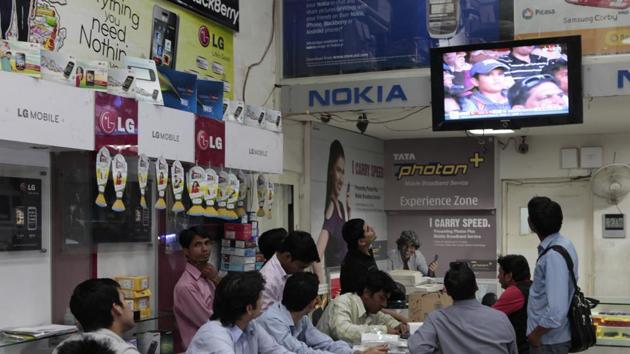The purpose of TV media measurement
Averages help media planners buy spots to secure reach, frequency. The system is working
Over a month after the story about mischief in television ratings broke, we are still in a lather about Television Rating Points (TRPs), bar-o-meters and the Broadcast Audience Research Council (BARC). Let us, instead, look beyond the measurement system and deal with what people actually do with the petabytes of data which BARC publishes.

Over 500 channels are licensed by the ministry of information and broadcasting. In addition, there are, at least, an equal number of services offered by distribution platforms. Typically labelled value-added services, they cover everything from classic cinema, specific genres of music, health and wellness, real estate, personal finance and, increasingly, education. These services are usually advertising-free and, given that they operate within the Distribution Service Operator (DSO)’s subscription-based walled garden, they are entirely outside BARC’s measurement.
Licence rules allow broadcasters to utilise no more than 12 minutes of advertising inventory or 24 spots of 30 seconds per hour. This norm is routinely violated. About 16 hours per day, from 7 am to 11 pm, is considered saleable; overnight inventories are often given to telemarketing slots. Thus, a channel can sell 192 minutes of inventory or 384 spots per day. This is 192,000 saleable spots per day across 500 channels.
When a brand decides to buy television inventory for a campaign, it begins with two objectives: One, reach, which is a minimum proportion of the target audience which must be exposed to the campaign; two, frequency, or the number of times a member of the target audience will be exposed to it. Given that audiences are scattered across such a wide raft of choices, both these objectives require buying lots of spots. Typical plans, for even small brands with modest objectives, will run across dozens of spots, across many channels. National fast moving consumer goods brands run thousands of spots in a single campaign period.
To invoke a metaphor, a regular-sized grape weighs five gm. That’s about 200 grapes per kilo, though it is never that many, because the twigs and stems make up around 10% of the weight. So, you get about 180 grapes per kg. How do you buy them? This is what I do. Pick one off the bunch, rub it on my shirt to get the superficial dirt off and check how sweet or tart it is. Check that there are no overripe or damaged grapes. Pick a bunch and ask the vendor to weigh it. There is no practical way of checking every single grape, is there? When you get back home, you will usually find that there will be the odd offending article which missed scrutiny. But that does no discredit to your purchase.
This, more or less, is how television inventory is also bought. When you procure hundreds, or thousands, of spots, it is impossible to tell if some of them will fail to deliver with your audience. Media plans, like grape-buying, work on averages. And the empirical fact, that those 192,000 spots are usually sold out most days, suggests that plans deliver reach and frequency as planned and procured.
So how does television inventory transaction work?. Television stations sell advertising inventory in three modes. One, fixed spots where an advertisement will appear on a specific programme at a specific time on a specific day. Two, run of day part (RODP) where an ad will appear within a time band. This could be morning, afternoon, evening or night. Three, run of schedule (ROS) when the ad will appear on the channel at a time and day of the broadcaster’s choice.
Fixed spots are expensive. ROS on the same channel is deeply discounted. Most media procurement, and this is true across all genres of content, is done on an RODP or ROS basis. In the news genre, for instance, even the leading players sell as much as three-fourths of their inventory on these terms of trade. (Anyone outside the top 10 sells almost exclusively on effective rate ER — a global average of all pricing on the entire inventory).
How, then, do media planners know what the buy will secure, in terms of reach or frequency? Because they use averages across the day, or even week, to pick their media choices. Indeed, when the rubber hits the road, it devolves further. A range of channels within a given genre is identified, all of which meet threshold standards on audience profile and impressions delivered. After this, the buyer, usually different from the planner, and far more hard-nosed, gets down to the business of ruthless negotiation. The buyer is not put off if a specific channel is intransigent; there is always another, more pliant one, waiting.
So, here’s what is happening. BARC is actually trying to measure the weight of every individual grape. But, by the time they change hands, buyers and sellers are only interested in their average weight, sweetness, tartness and colour, across single transactions which account for quintals.
Media measurement plays many useful roles in the lives of all stakeholders. However, it should be abundantly clear that the single-most important application is in pricing advertising inventory. For which, a system which did nothing more than give weekly averages of reach and frequency, by channel, would not perform much worse than the level of detail which is on offer at this time.
If you are furious with this suggestion, the next time you buy a kilo of sabudana, check each of the grains individually.
Paritosh Joshi is a media professional with a keen interest in audience measurement
The views expressed are personal



